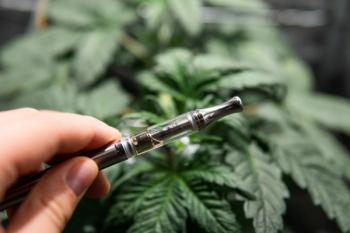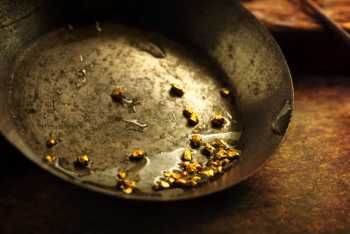
Cannabis Science and Technology
- March 2022
- Volume 5
- Issue 2
- Pages: 14-15
Solventless Extracts: An Overview

Here we explore the evolution of solventless extraction methods and the differentiating characteristics that may be driving its market growth.
Solventless extracts have rapidly consumed the attention of many cannabis connoisseurs. In this article, we will explore the evolution of solventless extraction methods and the differentiating characteristics that may be driving its market growth.
Cannabis has been part of human history for thousands of years, as seen in ancient Chinese artifacts. The late Frenchy Cannoli dedicated much of his life sharing the magical history of hash, the tradition of consuming hash, and the art of producing hash. We can attribute much of the cannabis industry’s understanding of traditional hash culture and hash processes to Frenchy. Traditionally, the cannabis plant has been consumed by smoking the flower, ingestion, or used for fiber for thousands of years. It seems as though consumers are becoming more conscious of the concerns around solvents like ethanol or butane. CO2 extraction and mechanical separation are continuing to be highlighted as some of the safest extraction methods in the industry. However, there is record of cannabis extraction first emerging through the production of charas and eventually hashish by collecting what we now know as the trichomes of the plant. Collecting trichomes can be as simple as handling the dried plant and collecting the resin that sticks to your hands. The resin can then be ingested or smoked. While this historic “by-hand” method is not scalable, it represents the beginning of cannabis extraction. Now, other methods of separation are used to selectively extract and preserve the resin-filled trichomes of the plant by using sieves, solvents, or presses.
Extraction is the act of separating a substance from a matrix. There are multiple methods of extraction including using chemical solvents such as ethanol or hydrocarbon. Extraction can also be done using physical or mechanical separation methods such as filtration or a press. Physical or mechanical separation is done without a solvent, which in the cannabis industry has been coined “solventless extraction.” Solventless extracts have attracted some operators and consumers due to the absence of solvents and the craft nature of the method. Solventless extracts have grown significantly in the cannabis market over the past few years and continue to capture consumer interest and market share.
Hash is a product that can be produced using water or solid-solid separation methods. Ice water hash is one of the most common solventless extraction methods. In this method, cannabis flower is placed in a fine mesh bag with ice and water and agitated. The centrifugal motion and interaction with the ice forces trichome heads to physically separate from the cannabis flower. The trichome heads pass through a series of sieves of distinct pore sizes, capturing trichomes of various size and structure. After the desired trichomes have been collected, they are placed into a freeze dryer to delicately evaporate any residual water. This ensures there is no water present when the product is heated and consumed. In addition, this minimizes the risk of bacterial growth or contamination. Lower water activity results in lower risk.
Operators either sell the product after the freeze-drying process or continue processing it to a wide variety of end products. One of the most popular and in-demand products in the solventless extract category is hash rosin. This product is defined as mechanically separated live rosin from the trichome heads of flash frozen freshly harvested cannabis flower. This is achieved by using a mechanical press to apply pressure and heat to the trichome heads. This method crushes the trichome heads and forces the resin to separate from the trichomes. The result is a viscous liquid that is rich in terpenes, cannabinoids, and other minor plant compounds found in the trichome heads.
The cannabis plant produces a wide variety of material that can be used for extraction and each of these varieties produce a wide range of extract quality. It is vital to use freshly dried or frozen cannabis with a high concentration of trichomes to optimize the production of solventless extracts. Traditionally, dried, untrimmed cannabis flower and leaf was used in the hash making process. However, as cannabis extraction has developed and access to high-quality cannabis has increased, extractors have honed in on their sourcing protocols. Now, solventless extractors are using freshly cured or freshly frozen cannabis flowers with dense concentrations of trichomes. This enables the extraction process to be more successful with higher trichome extraction efficiency relative to the undesirable plant material that gets left behind. In addition, extractors using freshly frozen materials can take advantage of the vastly different terpene profile that freshly harvested cannabis has versus dried cannabis. There are more solventless extract options available to consumers than ever before.
Despite many developments in the extraction process, operators must still maintain good manufacturing, safe, and hygienic practices. Solventless extracts can have residual water activity which, without proper handling and storage of the product, can result in microbial growth. This is a consumer safety risk that should not be taken lightly. Regulated markets mandate final product testing with accredited laboratories to ensure dangerous levels of microbial growth or mycotoxins are not present in the product. It is vital to consumer safety to produce solventless extracts under the right conditions as well as test the product to verify its quality.
There is a bottleneck in solventless extraction methods—scalability. This type of process is difficult to scale and has more art than science involved in production. In addition, there are no standard large-scale equipment options available for this process. Instead, custom units are required to scale up the traditional solventless extraction and processing steps. The cost to scale, the high cost of cannabis input material, and relatively low yields means that this method results in a high-cost product. This is reflected in the retail price of solventless extracts and they will continue to remain one of the most expensive products on the market.
Recommended Reading
https://www.google.com/books/edition/Cannabis_A_History/Mjn6sCiHoFIC?hl=en&gbpv=1&pg=PA84&printsec=frontcover. https://static1.squarespace.com/static/59cd905351a5846569cfbbca/t/5b3157830e2e72326c3e66ae/1529960329109/The+Origin=s+of+Concentrate%2C+Part+2%2C+Weed+World%2C+Issue+114.pdf.
About the Columnist
Lo Friesen is the founder, CEO, and Chief Extractor of Heylo. With a background in chemistry and clinical research, Lo was inspired to explore cannabis as a medicine and to enter the emerging industry. She joined Eden Labs, a leading CO2 extraction equipment manufacturer to support and expand a Research and Development department. There she managed the development of their latest and greatest CO2 extraction system. In 2017, after working with Eden Labs and another cannabis processor, Lo launched Heylo with a mission to help people get more out of life with cannabis.
How to Cite this Article:
L. Friesen, Cannabis Science and Technology 5(2), 14-15 (2022).
Articles in this issue
almost 4 years ago
High Five: Cannabis Science and Technology® Celebrates 5th Anniversaryalmost 4 years ago
More Innovative Cannabis Products Emerge Amidst Ongoing Processor Issuesalmost 4 years ago
Five Factors to Inform a Well-Grounded Growing Media DecisionNewsletter
Unlock the latest breakthroughs in cannabis science—subscribe now to get expert insights, research, and industry updates delivered to your inbox.



